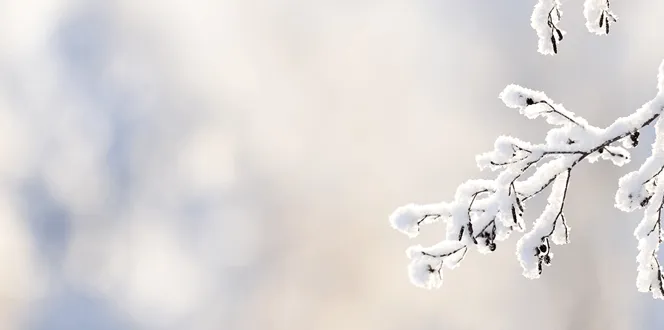Ah, spring. It’s an awakening in your landscape. All the worry about snow and ice buildup is gone and your trees, shrubs, and plants come alive.
As the new season begins to flourish, this is a great time to check your trees for any damage they may have sustained during winter. Identifying current problems can prevent more serious problems like broken branches, underperforming plants, or even toppled trees in the future.
Some symptoms of winter damage are obvious, but other signs are harder to spot.
Let’s review some of the things to look for when it comes to checking your trees for winter damage so you can become a pro at spotting symptoms of stress or weakness.
Look For Symptoms Of Winter Damage In Spring.
When inspecting your trees, look for the following visible symptoms:
- Decay, such as cracks, soft or crumbling bark, and fungal activity
- Shallow pits in the bark
- Dead twigs and branches
Here Are Some Detailed Steps To Follow:
- First, look at the tree from a distance. Review your tree from top to bottom. Make sure it’s standing up straight and not leaning. Look for larger dead branches or sections where there are no leaves at all. This is also a great time to look for any branches that are dying back or not leafing out. All of these can be symptoms of a sick tree. Getting an evaluation by a certified arborist can eliminate any worries.
- Next, check the ground around the tree and the bottom portion of the tree – the bottom 3 feet. Inspect where the trunk meets the ground: Do you see any raised soil or cracked soil? This could be a sign your tree is uprooting. You might also see fungus or mushrooms on or near your tree’s roots or trunk. These can be signs of root or trunk decay. Any uprooting, root rot or decay at a tree’s base may indicate your tree is at risk of falling over. This can be potentially dangerous, so have your tree professionally inspected to confirm your suspicions to help prevent any unnecessary damage.
- Then, move your eyes up the tree to the trunk. On the trunk, you’re looking for cracks, splits, missing bark, and sawdust that has fallen from the trunk. Also, when checking trees with multiple trunks, look at the unions to ensure they are strong. Some of these signs can indicate instability or insect damage, and you’ll want a certified arborist to ensure your tree is stable.
- Finally, review the crown of your tree, including the leaves and branches that extend out from the trunk. Dead or broken branches are the first obvious symptoms you might see. These are hazards and are important to properly remove. Any other areas that seem inconsistent while you’re looking overhead are also important to watch for: smaller branches that aren’t fully leafing out when the rest of the tree is, for instance. Your local arborist can tell you if anything looks especially troublesome.
Common Winter Tree Damage
Frost Cracks
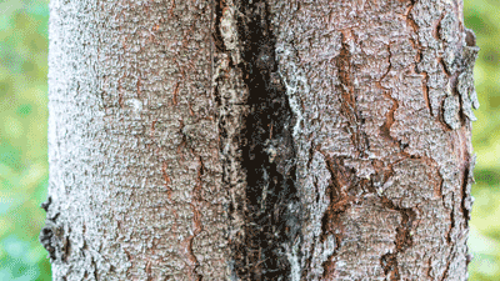
If you are in fact experiencing rapid temperature changes, be on the lookout for frost cracks. When temperatures drop suddenly, your tree’s outer layer of bark may contract more rapidly than the inner layer, resulting in long, vertical cracks. Once your tree experiences a frost crack, it is likely to reappear every year.
- The solution: Wrap trees in burlap to help them keep warm and protect them against wind and salt spray. This technique tends to be easier for smaller trees.
Winterburn
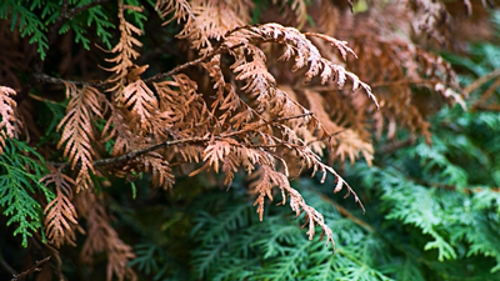
Some trees, especially evergreens, are stressed by desiccation, or the loss of water caused by winter sun and heavy winds. Look for browning at the tip of the foliage in hemlocks, junipers, pines and yews.
- The solution: Apply an anti-desiccant treatment to evergreens to help reduce the loss of water prior to onset of damage. Also, water trees and shrubs during drier periods or when the ground is unfrozen.
Root Damage
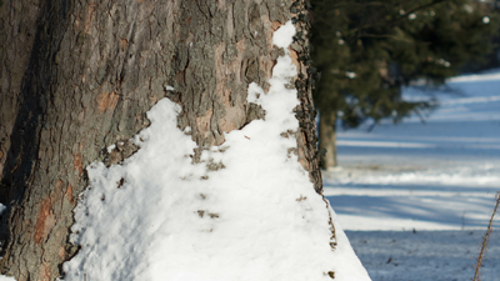
Damage to your tree’s roots can cause serious decay or even death. If you are likely to experience soil temperatures below 15 degrees, know that your trees may have stress damage.
- The solution: Apply mulch, leaf litter and snow cover to help insulate roots and prevent the temperatures from falling below freezing.
Snow And Ice Breakage
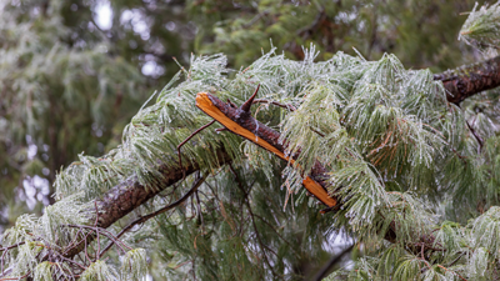
Heavy snow and ice storms can add extra weight to your tree’s branches and limbs, causing breakage. This can be increased by improper removal and shaking ice off branches.
- The solution: Tie branches together with cloth or twine, gently remove fluffy, powdery snow or naturally let ice melt away.



